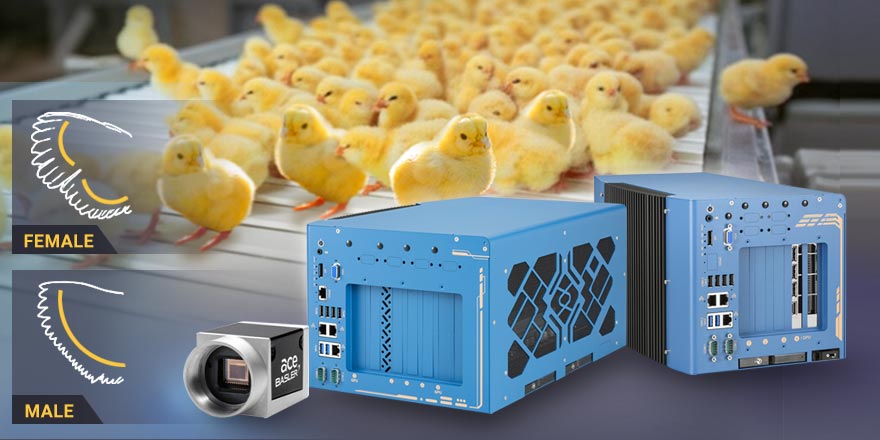HOME / Applications / The Future of Poultry Starts with Smarter AI-Powered Vision
The Future of Poultry Starts with Smarter AI-Powered Vision

When processing day-old chicks, many important factors need to be taken into account, such as daily production volume, the available time frame demand, and in many cases a high throughput. On the other hand, delicate chick handling is required to conform with the high standards of animal welfare. Therefore, precision and accuracy during additional operations, such as gender sorting, require special attention.
The feather sex identification system has become a key component in the hatchery automation portfolio. Traditionally, this task relies heavily on manual labor, which involves physically handling each chick—often leading to unnecessary stress and movement that compromises both animal welfare and process consistency. Moreover, traditional feather sexing by visual inspection is inherently subjective, with human error contributing to misidentification rates as high as 20%.
To address these challenges, the system leverages artificial intelligence, machine learning algorithms, and high-speed vision technology to accurately distinguish between male and female chicks by analyzing the length of primary and covert feathers. This advanced, automated approach not only eliminates mishandling and misjudgment but also significantly improves accuracy, enabling hatcheries to achieve up to 98% feather sexing precision.
However, hatchery environments are often dusty, humid, and prone to temperature fluctuations, making both image quality and system reliability critical to success. Choosing a rugged, industrial-grade computer that can operate reliably in such harsh conditions while delivering high AI computing performance and capable of integrating high-resolution, high-speed machine vision cameras is essential.
The rugged GPU computer and advanced machine vision cameras ensure reliable, accurate, and efficient chick sex identification in demanding, high-throughput production settings
The rugged GPU computer is powered by a long-life NVIDIA RTX Ada Generation GPU, such as a RTX 4000 Ada, RTX 5000 Ada, or RTX 6000 Ada, delivering up to 1457 TFLOPS of Tensor AI performance. Featuring an advanced and proven thermal design for both the CPU and GPU, it supports reliable operation in wide temperature ranges from -25°C to 60°C. Purpose-built for harsh environments like hatcheries, where dust, heat, and vibration are common, this industrial-grade system combines robust durability with powerful computing capabilities. When paired with advanced vision technology, it enables accurate, efficient, and reliable chick sex identification in high-throughput production settings.
